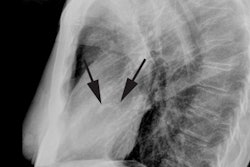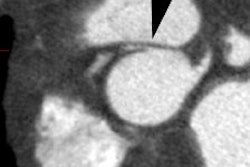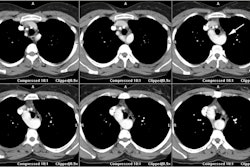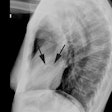AJR Am J Roentgenol 1996 Aug;167(2):439-444
Measurement of coronary artery calcium with dual-slice helical CT compared with coronary angiography: evaluation of CT scoring methods, interobserver variations, and reproducibility.
Broderick LS, Shemesh J, Wilensky RL, Eckert GJ, Zhou X, Torres WE, Balk MA, Rogers WJ, Conces DJ Jr, Kopecky KK
OBJECTIVE. This study was performed to evaluate new scoring methods for quantitating coronary artery calcifications with helical CT and to compare the results with those of quantitative coronary angiography in patients with suspected coronary artery disease. SUBJECTS AND METHODS. Unenhanced dual-slice helical CT and coronary angiography were performed within 24 hr of each other in 101 patients with symptoms of coronary artery disease. Coronary artery calcifications with a density above 90 H were identified on each slice and, with the same regions of interest, quantitative scoring was performed at thresholds of 90 H (new) 130 H (old). Two mathematical algorithms (one new and one old) were evaluated for both thresholds (yielding four scoring systems). By CT imaging, we defined disease as a score of greater than zero. By angiography, we defined disease as a 50% or greater reduction in the luminal diameter of any major vessel. Interobserver variations in calcification scoring were evaluated. Seventeen of our patients. also underwent a second, consecutive CT scan to determine reproducibility. RESULTS. With the new threshold and the new algorithm, the sensitivity, specificity, and accuracy of helical CT in predicting disease were 88%, 52%, and 76%, respectively. We found a moderate positive association between the total CT calcification score and the number of stenotic coronary arteries at angiography (Pearson's correlation coefficient, .43; p = .05 [analysis of variance]). The accuracy and the area under the receiver operating characteristic curve were higher with the new threshold and the new algorithm. Interobserver agreement in calcification scoring was high (intraclass correlation coefficient, .99 [n = 85]), as was reproducibility (intraclass correlation coefficient, .94 [n = 17]). Reproducibility was higher when scoring was based on the new threshold and the new algorithm. CONCLUSION. The quantity of coronary artery calcifications as measured by helical CT correlated positively with obstructive coronary artery disease as measured by angiography. Interobserver agreement and reproducibility were excellent. A new scoring method showed promise.
PMID: 8686622, MUID: 96302024






